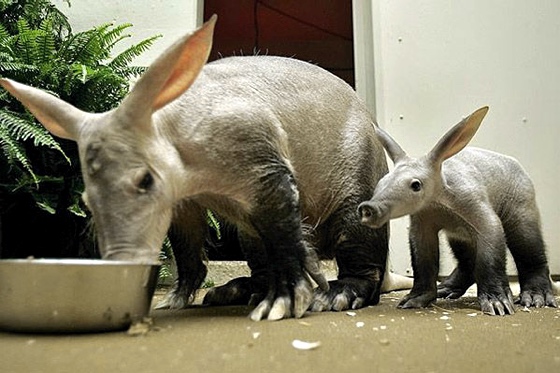
(CC) Clauds Claudio
We are awash in ideological crazy-talk about “the self”:
Moralists say we have to overcome our selves because they are selfish
Psychotherapists say most people’s aren’t working well, and need tune-ups using their expert understanding of how selves should work
Spiritual teachers say we have somehow misplaced and forgotten our true selves, and must go on quests to find them
Most implausibly, Buddhists say the self does not exist—and, worse, many pop science writers agree!
Unfortunately, we cannot ignore these discordant voices, because questions of self are inseparable from questions of meaning: purpose, ethics, authority, and personal value.
Uneasily, we apply bits of all these stories about “self” in different circumstances. We might study one theory or many in detail, trying to make sense of our selves. Mostly, though, we try not to think to much about questions of self; it is anxiety-provoking, and experience shows it usually doesn’t lead anywhere useful.
Confused stances rest on an unnoticed, mistaken metaphysical assumption: that “the self,” if any, must be a durable, separate, continuous, well-defined thing. Then these stances claim that there is such a thing (but maybe you have the wrong sort); or that there isn’t one (and you are stupid and doomed if you disagree); or that there ought to be one (so you need to create or find it); or that there ought not to be one (so you need to get rid of yours).
“Self” contrasts with “other”; between them, there must be a boundary. The last chapter explained how boundaries are always nebulous: vague, changeable, and purpose-dependent. This is especially true of the self/other boundary. Where we draw it varies according to what we are doing—and rightly so. The same applies to boundaries between different parts of the self (insofar as it is meaningful to speak of “parts of the self” at all).
We saw that there are two confused stances concerning boundaries: monism, which denies boundaries, and dualism, which fixates them. We’ve also discussed two other fundamental confused stances: eternalism insists that everything is meaningful; nihilism denies all meaning. These can combine, producing for example monist eternalism or dualist nihilism.
Dualist eternalism regarding the self/other boundary insists that you do have a self that is durable, separate, continuous, well-defined. Different versions assert conflicting claims about “what the self really is.” Or, they say, you should have a particular kind of self, so if you don’t, you need to fix that.
Monist eternalism says that really there is no boundary between self and other; so if it seems like there is, you need to fix that.
Nihilism says there is no self at all; the concept is meaningless, so if you think you have a self, you need to fix that.
These combine in extra-confused ways. Some people claim that your self really doesn’t exist, and it is bad, so you need to get rid of it. Some claim that you have a hidden True Self, and it is the same thing as having no self. Some claim this True Self is The Entire Universe.
All such confusions come from the assumption that “the self” must live in something like a house, with solid walls that stay put and keep hailstorms outside and your pet aardvarks inside. Crazy ideologies begin when insightful people notice the self/other relationship not working like that, but lack a framework for understanding nebulous boundaries.
Nebulous selfness
Recognizing that the “boundary” between self and other is both patterned (non-arbitrary, partly predictable, somewhat reliable) and nebulous (ill-defined, unstable, purpose-dependent) dissolves all the confused stances. I call this complete stance “intermittently continuing.” Here, “self” is not a thing; it’s nebulous patterns of interaction. It is sometimes useful to say “selfness” or “selfing” to underline the non-object-ness.
Having abandoned the confused stances, there’s much to say about selfness in the complete stance. And this is all fascinating and often useful. But it’s important not to overvalue the details (so I will reluctantly limit my discussion). There’s more value simply in dissolving self as a problem. Once you firmly set aside the confusions, what remains doesn’t require a lot of fussing over.
For the complete stance, meaningness lies in dynamics: patterns of interaction. To understand any particular dynamic, you have to look at aspects of both “self” and “other,” and also the “boundary” between them. (I’ve put scare quotes around all these to underline their nebulosity and non-object-ness.) Typically, most of “the self” and “the world” are irrelevant to a dynamic, so they are the wrong conceptual categories.

Aadorable aardvarks (CC) Scotto Bear
Let me make a ridiculous analogy. You notice that your house is increasingly inhabited by tarantulas, which you fail to fully appreciate due to arachnophobia. You could declare them illusions and ignore them (no-self nihilism); that would work until you wake up with a pair engaged in amorous activities on your face. You could tear down all the walls (monism) because you and tarantulas and aardvarks are All One. However, you’d still have tarantulas, plus hailstorms, and the aardvarks might bolt. You could caulk all the tiny holes around the windows to keep tarantulas out (dualism)—but we’ll see that won’t help unless you nail the front door shut too. (Then you’d starve.) You might decide that your house is the wrong kind (the kind that tarantulas infest) and move into a different one—but it turns out that won’t work either. There’s nothing wrong with your house (self).
On investigation, you discover that your daughter has been bringing home a tarantula every day to feed to the aardvarks; but they don’t like tarantulas, and ignore them, so the would-be meals wander off to inhabit your dress shoes and silverware drawer.
The problem is not with the house, nor with the world outside the house. The problem is an activity that actively transports creatures across the boundary. Discussion with your daughter reveals that her biology teacher has told her that aardvarks eat bugs, and the biggest bugs she could find were tarantulas, so she thought your pets would especially enjoy them. A misconception easily corrected; problem solved.1
Meaningness is like this, I will suggest. It is neither objective nor subjective: neither outside the self, nor inside. Rather, meanings are patterns of activity that cross the nebulous self/other boundary.
Nebulosity of self makes complete control impossible
“Intermittently continuing” is unsettling because it undercuts fantasies of control. It contradicts the ideal of a unitary subject with free will, because activity is always a dynamic, improvised collaboration with nebulous-but-patterned otherness.
(What I say here about control is condensed and may not make sense yet. I’ll explain more later in this chapter; the upcoming chapters on capability and contingency discuss nebulosity of control in depth.)
Any causal analysis of activity has to trace high-frequency loops of mutual influence that cross the self/other boundary. We cannot make independent choices because the permeability of that boundary—via perception and action—means we are never independent. It is futile to try to force interactions to conform to a preconceived idea of how they should go.
We cannot even control ourselves, because phenomena switch frequently from “self” to “other” and back; because “parts of self” have nebulous boundaries themselves; and because they are often more closely coupled to “other” than to other parts of self. As a dramatic example, when two people fall in love against their better judgement, each person’s emotions communicate more with the other’s than with their own more dispassionate thoughts.
Allowing nebulosity of selfness enables accurate relationships
Intermittently continuing means learning to be comfortable with the ambiguity and unpredictable changeability of selfness. That requires attention, courage, hard work, and good humor. However, it frees you from neurotic self-obsession, and increases the effectiveness and enjoyability of your relationships.
Supple, skillful selfing makes for satisfying, successful interactions. Firm and fluid othering enables us to play with the self/other boundary—whose interpenetrating nebulosity and pattern become a source of amusement. We can co-construct our lives as art projects in the shared space of meaningness, not inside or outside, but between and surrounding and pervading us.
- 1.Did you know that the only thing aardvarks eat besides ants and termites are aardvark cucumbers, which fruit underground? For desert-living aardvarks, these cucumbers are a vital water source. Conversely, aardvark cucumbers are entirely dependent on aardvarks for reproduction. Nothing else eats them to disperse the seeds.
